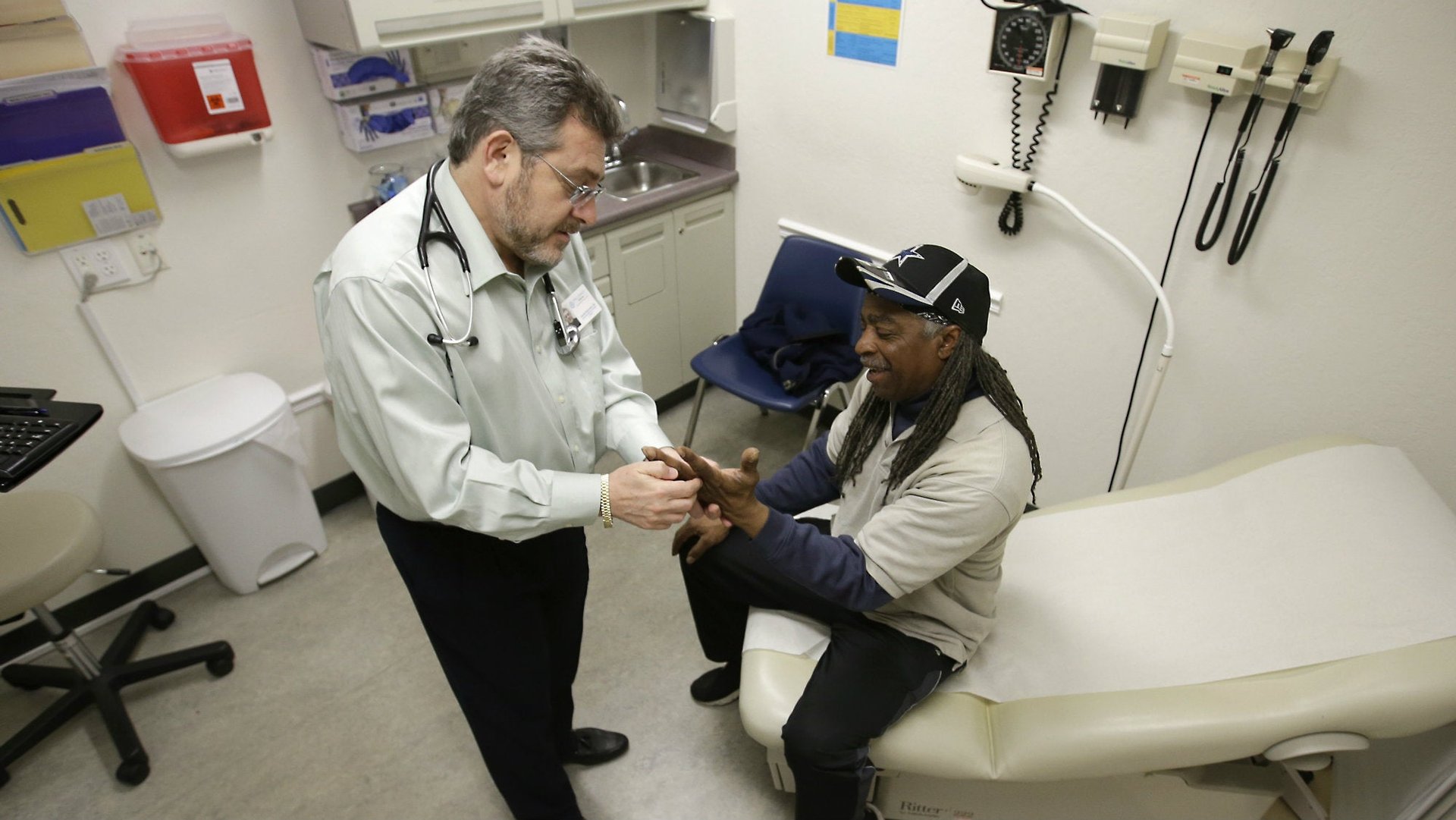How patients hear their diagnoses can change everything about what happens next
When sick people seek medical care, there’s an expectation that doctors will do everything they can to manage the problem. But more care—more tests, more procedures, more aggressive treatments—is not always better. Overprescription of antibiotics for relatively minor, common ailments leads to drug-resistant bugs and unnecessary expense. Patients with serious conditions like cancer often don’t live longer or enjoy a better quality of life when given aggressive treatments compared to those on more conservative care plans.


When sick people seek medical care, there’s an expectation that doctors will do everything they can to manage the problem. But more care—more tests, more procedures, more aggressive treatments—is not always better. Overprescription of antibiotics for relatively minor, common ailments leads to drug-resistant bugs and unnecessary expense. Patients with serious conditions like cancer often don’t live longer or enjoy a better quality of life when given aggressive treatments compared to those on more conservative care plans.
The question is, if aggressive treatment is more often than not worse for patients, why do they keep ending up on those plans? A survey of multiple studies examining the effect of the terminology used by doctors when communicating diagnoses on patients’ decisions found a trend: the more precise or “medical-ese” the doctor’s term for the condition, the more patients opted for invasive, aggressive treatments.
The survey authors looked at six studies covering more than 1,000 subjects. In one study, researchers found that women told they had “polycystic ovary syndrome” were significantly more likely to seek a subsequent ultrasound than those told they had a “hormone imbalance.” When doctors used the term “gastroesophageal reflux disease” to describe a baby’s indigestion instead of discussing the symptoms without a label, parents more often wanted medicine prescribed, even when their doctors explained to them that medication would likely be ineffective.
The effect was especially pronounced for cancer. That frightening word in reality encompasses a range of conditions with various prognoses, from grave Stage IV tumors to very treatable precancerous abnormal cells. Ductal carcinoma in situ (DCIS), for example, is a relatively common, non-invasive condition of abnormal cells in the milk glands of the breast. Though it can in turn into invasive cancer, the majority of women with DCIS do not go on to develop breast cancer. Given the risks of surgery, some doctors say there are times when monitoring the condition is more appropriate than rushing to invasive treatments.
In one study where women were asked to imagine they’d been diagnosed with DCIS, 67% of those told they had “abnormal cells” were willing to monitor their symptoms instead of seeking immediate treatment. Yet when asked what they’d want to do if they were told they had “pre-invasive cancer cells,” many women changed their minds, with 45% wanting immediate treatment and only 55% willing to wait and see.
Another study looked at the impact of language on womens’ choices of treatment: 53% of participants picked non-surgical treatments when DCIS was described as a non-invasive cancer. That number went up to 66% when the condition was described as a breast lesion, and 69% when it was described as “abnormal cells.” For many women, the less-aggressive treatment is the better option: A 2015 study found that for patients with low-grade DCIS, opting for less-invasive radiation instead of surgery had no effect on survival rates.
It seems like just words, but language, in health care, is potent. One of the clauses in the Affordable Care Act requires caregivers to implement something called “Shared Decision Making” (paywall) in their practices—essentially, doctors and patients making choices together about the path of treatment. It appears that the terms doctors choose exert a powerful pull over those decisions.